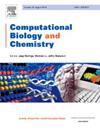deucravacitinib 对 TYK2 的多重作用异构抑制:计算模拟的启示
IF 2.6
4区 生物学
Q2 BIOLOGY
引用次数: 0
摘要
TYK2 参与 Janus 激酶-信号转导和转录激活因子(JAK-STAT)通路,是控制各种自身免疫性疾病(包括银屑病和多发性硬化症)的有希望的治疗靶点。Deucravacitinib(DEU)是一种新型口服TYK2特异性抑制剂,于2022年获得批准,在中度至重度银屑病试验中临床有效。根据AlphaFold2预测的TYK2伪激酶结构域(JH2)和激酶结构域(JH1),我们借助分子动力学模拟探索了TYK2 JH2-JH1上强调的异生抑制机制的细节。结果表明,DEU对TYK2的异生抑制是通过影响JH2-JH1界面、阻碍JH1的状态转换和ATP结合来实现的。特别是,DEU的结合稳定了JH2和JH1之间的自抑制界面,同时破坏了激活界面的形成。因此,JH2 对 JH1 的负调控作用大大增强。这些发现为假激酶依赖性的JAK激酶结构域自身抑制提供了更多细节,并为JAK成员的JH2靶向药物发现提供了理论支持。本文章由计算机程序翻译,如有差异,请以英文原文为准。
The multiple-action allosteric inhibition of TYK2 by deucravacitinib: Insights from computational simulations
Participating in the Janus kinase-signal transducer and activator of transcription (JAK-STAT) pathway, TYK2 emerges as a promising therapy target in controlling various autoimmune diseases, including psoriasis and multiple sclerosis. Deucravacitinib (DEU) is a novel oral TYK2-specific inhibitor approved in 2022 that is clinically effective in moderate to severe psoriasis trials. Upon the AlphaFold2 predicted TYK2 pseudokinase domain (JH2) and kinase domain (JH1), we explored the details of the underlined allosteric inhibition mechanism on TYK2 JH2-JH1 with the aid of molecular dynamics simulation. Our results suggest that the allosteric inhibition of DEU on TYK2 is accomplished by affecting the JH2-JH1 interface and hampering the state transition and ATP binding in JH1. Particularly, DEU binding stabilized the autoinhibitory interface between JH2 and JH1 while disrupting the formation of the activation interface. As a result, the negative regulation of JH2 on JH1 was greatly enhanced. These findings offer additional details on the pseudokinase-dependent autoinhibition of the JAK kinase domain and provide theoretical support for the JH2-targeted drug discovery in JAK members.
求助全文
通过发布文献求助,成功后即可免费获取论文全文。
去求助
来源期刊

Computational Biology and Chemistry
生物-计算机:跨学科应用
CiteScore
6.10
自引率
3.20%
发文量
142
审稿时长
24 days
期刊介绍:
Computational Biology and Chemistry publishes original research papers and review articles in all areas of computational life sciences. High quality research contributions with a major computational component in the areas of nucleic acid and protein sequence research, molecular evolution, molecular genetics (functional genomics and proteomics), theory and practice of either biology-specific or chemical-biology-specific modeling, and structural biology of nucleic acids and proteins are particularly welcome. Exceptionally high quality research work in bioinformatics, systems biology, ecology, computational pharmacology, metabolism, biomedical engineering, epidemiology, and statistical genetics will also be considered.
Given their inherent uncertainty, protein modeling and molecular docking studies should be thoroughly validated. In the absence of experimental results for validation, the use of molecular dynamics simulations along with detailed free energy calculations, for example, should be used as complementary techniques to support the major conclusions. Submissions of premature modeling exercises without additional biological insights will not be considered.
Review articles will generally be commissioned by the editors and should not be submitted to the journal without explicit invitation. However prospective authors are welcome to send a brief (one to three pages) synopsis, which will be evaluated by the editors.
 求助内容:
求助内容: 应助结果提醒方式:
应助结果提醒方式:


